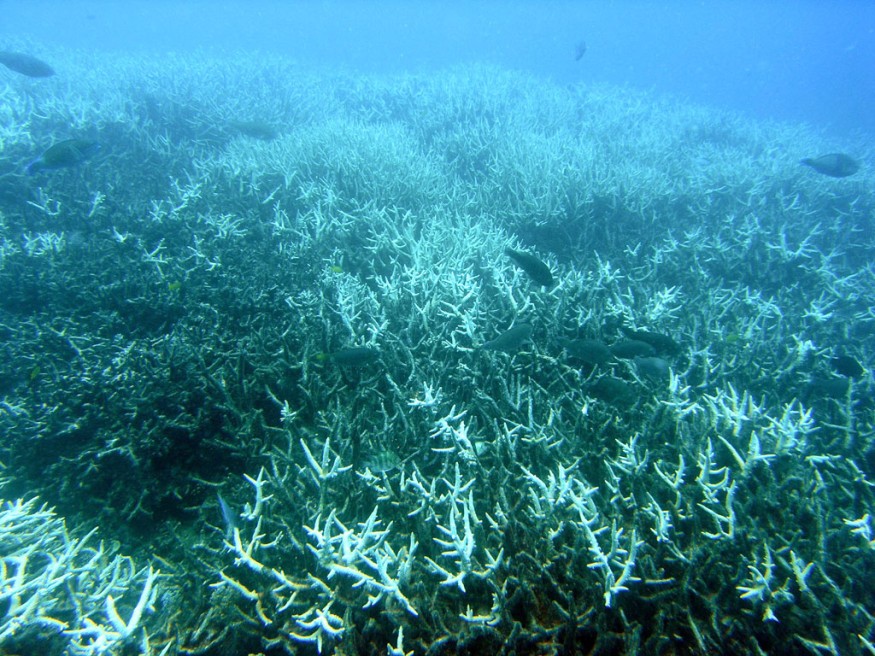From deadly flash floods that raced through mountain communities in Europe and submerged subway systems in China and the United States to heat waves and wildfires, the world saw record-breaking climate and weather disasters in 2021.
In the Philippines, Typhoon Rai killed over 400 people, and Hurricane Ida inflicted an estimated US$74 billion in damage.

Statistical Reports
According to statistics provided by NASA and the National Oceanic and Atmospheric Administration in its annual global climate report on Jan. 13, 2022, it was the sixth warmest year on record for surface temperatures. However, in 2021, ocean temperatures broke new scorching records.
While the temperature at the Earth's surface is what humans feel daily, the temperature in the top section of the ocean is a better measure of how extra heat is accumulating on the globe, according to climate scientist Kevin Trenberth.
Trenberth, the co-author of a paper released on Jan. 11, 2022, by 23 academics from 14 institutes that studied warming in the world's seas, was interviewed by The Conversation.
Related ARticle : Changes in Oceanic Temperature and Current are Direly Affecting Extreme Weather Events
Hotter than Ever

It is hotter than ever before, and the temperature of the seas has climbed every decade since the 1960s. This unstoppable rise is a vital sign of human-caused climate change.
Weather systems become more violent storms and hurricanes as the seas warm and heat supercharges weather systems. This results in more severe rainfall. Human lives and livelihoods, as well as marine life, are at risk as a result.
The seas absorb around 93% of the additional energy trapped by rising greenhouse gas emissions from human activities, mainly fossil fuel burning. The upper seas are the main memory of global warming because water stores more heat than land, and huge volumes are. In my new book, "The Changing Flow of Energy Through the Climate System," I go further into depth about this.
The study was the first to look at ocean warming in 2021, and the researchers were able to link it to human activity. Unfortunately, global warming is still alive and thriving.
Extreme Heat Season
Due to year-long La Niña conditions, in which chilly temperatures in the tropical Pacific impact weather patterns worldwide, the global mean surface temperature was the fifth or sixth highest on record in 2021 (depending on the dataset used).
Because of El Niño/La Niña and weather events, surface air temperatures fluctuate much more naturally than the ocean. On top of a rising sea, natural variability causes hot patches, known as "marine heat waves," which change from year to year. These hot areas significantly impact marine life from small plankton to fish, aquatic animals, and birds. Hurricanes, for example, are caused by other hot spots that cause additional activity in the atmosphere.
General Temperatures
While surface temperatures are both a result and a cause of extremes, ocean heat, which energizes weather systems, is the primary source of the processes that generate extremes.
Global warming causes more evaporation and dryness on land and higher temperatures, posing a danger of heat waves and wildfires on the ground. In 2021, we saw the effects, particularly in western North America, Russia, Greece, Italy, and Turkey, as a result of heat waves.
As well as supplying atmospheric rivers of moisture to land regions, warmer oceans increase the danger of flooding, as seen in the United States. Experiences on the West Coast
Extreme Weather
Warmer seas provide increased moisture in the atmosphere. Storms, particularly hurricanes, are fueled by this excess moisture. Like the United States, prodigious rainfall witnessed with Hurricane Ida and severe flooding, as has occurred in many locations over the last year, can be the outcome.
Storms may grow more violent, larger, and persist longer as well. This year, Australia, as well as New Zealand, have had many big flooding storms. Winter may also bring more snowfalls if temperatures stay below freezing since warmer air stores more moisture.
Warm water rests on top of cooler, denser waters in the seas. On the other hand, the oceans warm from the top-down, resulting in higher stratification. This prevents layers from mixing, which would allow the sea to warm to deeper depths and absorb carbon dioxide and oxygen. As a result, all aquatic life is affected.
In the top 500 meters of the water, researchers discovered that the temperature has been rising since 1980; the 500-1,000 meter depths have been rising since about 1990; the 1,000-1,500 meter depths have been rising since 1998; the bottom 500 meters have been rising since around 2005.
Even when greenhouse gas emissions are stabilized, seas will continue to warm, and sea levels will rise due to the sluggish entry of heat below.
Monitoring Changes

The need to improve scientists' abilities to monitor changes in the seas is the final topic to consider.
Argo, which presently has around 3,900 profiling floats that transmit back data on temperature and salinity from the surface to about 2,000 meters in depth, recorded as they rise up and then sink in ocean basins throughout the world.
These robotic, diving, and floating devices need to be replenished regularly, and their insights are vital.
Also Read : New Set of Ocean Temperature Data Might Help Scientists Create Better Models and Predictions
For more Environmental news updates, don't forget to follow Nature World News!
© 2026 NatureWorldNews.com All rights reserved. Do not reproduce without permission.





